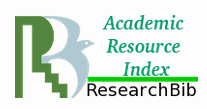COMPARISON OF SYSTEMS FOR THE CLASSIFICATION, IDENTIFICATION AND COMMUNICATION OF HAZARDS AND RISKS OF DANGEROUS SUBSTANCES
Keywords:
hazards and risks, pictograms, globally harmonized system, chemical substancesAbstract
Introduction:
From the perspective of prevention, knowledge of the hazardousness of chemicals and the potential negative effects they can produce is essential to be able to assess their risks and take measures to reduce them.
Objective:
To critically approach the fundamental aspects of the different systems for the classification, identification and communication of hazards and risks in the handling of dangerous substances.
Materials and Methods:
A compilation of the main systems developed and applied internationally (European Union, United Nations Organization, United States Fire Protection Agency, American Association of Coating and Paints of the United States and the Globally Harmonized System).
Results and Discussion:
In each one of them the shape and color combination of the pictograms, the symbols and icons used, warning words and letters, as well as the phrases to communicate the dangers or risks, compatibility and the precautionary recommendations are detailed. Due to its current status and increasingly extensive use worldwide, is detailed the Globally Harmonized System of Classification and Labeling of Chemical products (GHS).
Conclusions:
The GHS is a logical approach to chemical classification; it significantly enhances the proper, clear and easily understandable communication of chemical hazards, the protection of human health and the environment, and the management of chemicals by providing a single, standardized and harmonized system for classifying chemicals and developing labels and MSDSs.
Downloads
Downloads
Published
How to Cite
Issue
Section
License

This work is licensed under a Creative Commons Attribution-NonCommercial 4.0 International License.




















